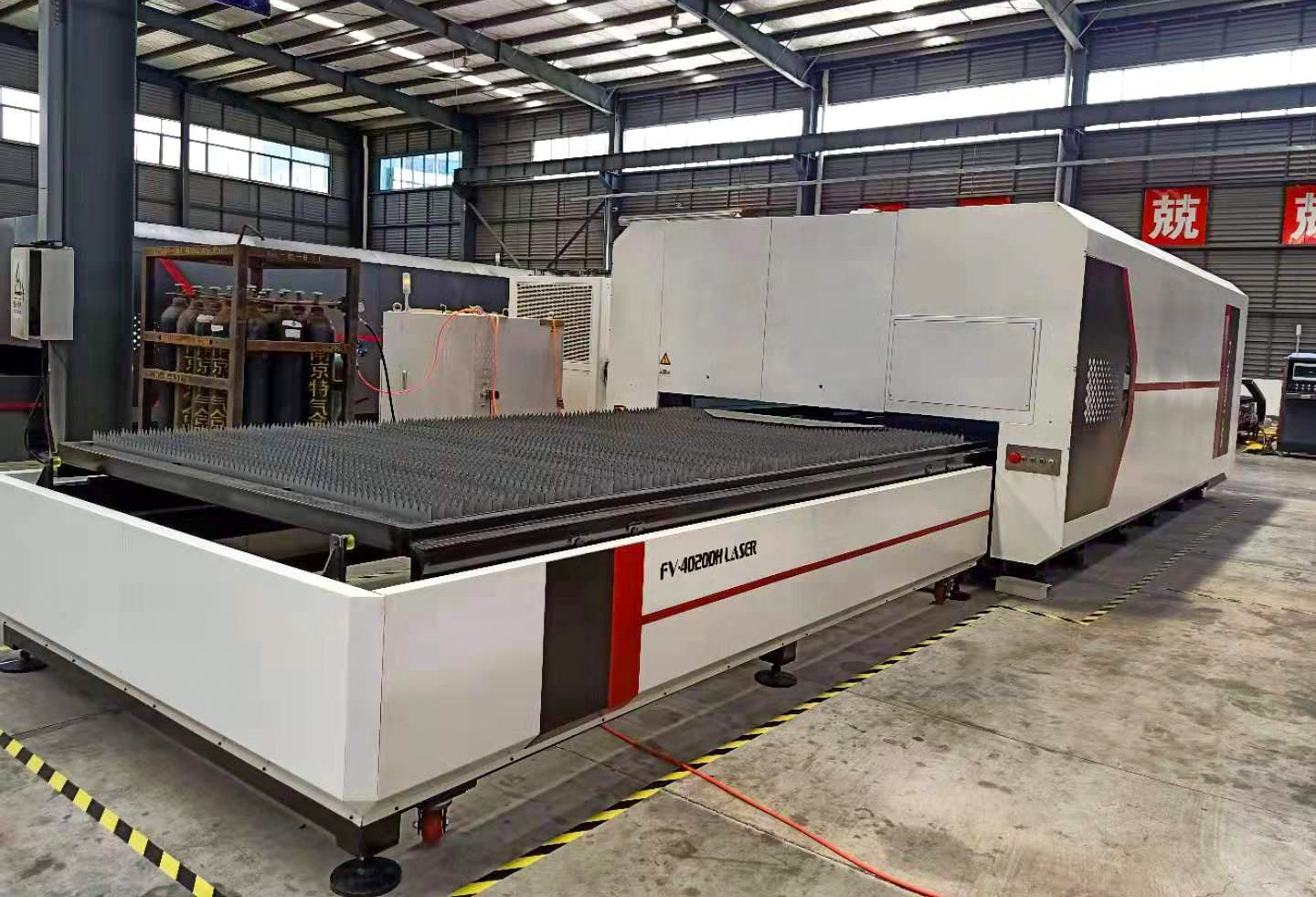Union Intelligent CNC Industrial Park A&B, Hefei, China 231131
Technological
Step-by-Step Upgrading Your Fiber Laser Cutting Machine
A standard 3kw 3015 fiber laser cutting machine is a versatile tool for sheet metal fabrication, equipped with a 3000W MAX or Raycus laser source, a 3000mm × 1500mm worktable, a basic cutting head, and a conventional CNC control system. While this setup handles everyday cutting tasks efficiently, manufacturers often need to expand capabilities - whether by increasing power, adding automation, improving precision, or enabling tube cutting. Rather than purchasing an entirely new machine, upgrades can enhance performance at a fraction of the cost.

Upgrading Laser Power for Thicker and Faster Cutting
One of the most impactful upgrades is increasing the laser power, allowing the machine to cut thicker materials or achieve higher speeds. Moving from a 3kw to a 6kw, 12kw, or even 20kw laser source significantly boosts productivity, but this upgrade demands careful consideration of supporting components. The cutting head must be replaced with a model rated for higher power, such as a Precitec YW52 for 6kw or a HighYag BIMO for 12kw and above. Additionally, the cooling system must be upgraded - higher-power lasers generate more heat, necessitating a more robust chiller, typically a 10kw or larger water-cooled unit. The beam delivery system, including fiber optic cables and mirrors, must also be checked for compatibility. Importantly, the machine's structural integrity should be evaluated, as higher power levels can introduce greater dynamic forces that older frames may not withstand.
Automating Material Handling with Loading/Unloading Systems
For workshops handling high-volume production, manual loading and unloading of sheets can become a bottleneck. Adding an automatic loading/unloading system streamlines operations, reduces labor costs, and minimizes downtime between jobs. This upgrade typically involves integrating a robotic arm or conveyor system, such as a Fanuc robot or a motorized belt conveyor, along with a material storage rack for continuous feeding. The machine's CNC control system must also be updated to support automation, with software like BySoft 7 or Siemens 840D providing the necessary programming flexibility. Safety is another critical factor - sensors and protective guards should be installed to prevent collisions and ensure smooth operation. While this upgrade requires a significant investment, the long-term efficiency gains often justify the cost.
Expanding Capabilities with Tube and Profile Cutting
Many fabricators need to cut not only flat sheets but also pipes, square tubes, and structural profiles like H-beams. Adding tube-cutting functionality transforms a standard flatbed laser into a more versatile machine. The essential components for this upgrade include a rotary chuck with an A/C axis to rotate the tube during cutting, a laser cutting head with adjustable Z-axis to follow contours, and support rollers to stabilize long workpieces. The control software must also be upgraded to include specialized tube-cutting modules, such as BySoft TubeCut or Lantek Expert Tube, which provide pre-programmed settings for different profiles. This modification opens new business opportunities but requires careful alignment and calibration to ensure precision.

Enhancing Precision for Demanding Applications
Over time, mechanical wear or outdated components can degrade a machine's accuracy. Restoring or improving precision involves several targeted upgrades. Replacing worn rack-and-pinion drives with high-precision models from brands like Lapping or THK ensures smoother motion and reduces backlash. Upgrading linear guide rails to high-rigidity options from THK or SMG enhances stability, while servo motors with high-resolution encoders (e.g. Yaskawa or Mitsubishi) improve positioning accuracy. The CNC system should support real-time compensation for thermal expansion and mechanical play. For the highest precision requirements, laser interferometer calibration can fine-tune the machine to within ±0.03mm. These upgrades are particularly valuable for industries like aerospace or medical device manufacturing, where tight tolerances are critical.
Converting to a Fully Enclosed Machine for Safety and Cleanliness
Normal laser cutters expose operators to noise, dust, and potential hazards. Upgrading to a fully enclosed design improves safety, reduces environmental pollution, and enhances dust extraction efficiency. This modification involves constructing a steel frame with safety glass panels, integrating automatic sliding doors for material access, and installing a high-performance dust extraction system. Enclosed machines also benefit from better temperature control, which is especially important for high-power lasers. However, this upgrade is only feasible if the original machine frame is structurally solid - older or heavily used machines may not support the additional weight and modifications required.
When to Upgrade vs. When to Invest in a New Machine
While the upgrades discussed can significantly extend a machine's capabilities, there comes a point where the total cost and complexity outweigh the benefits. If multiple major upgrades are needed - such as increasing power, adding automation, and improving precision - it may be more economical to invest in a new machine designed with these features from the outset. For example, SUDA Laser FV Series offers a high-performance solution with IPG 6kw–20kw laser sources, full enclosure designs, and premium components such as SMG guide rails, Yaskawa servos, and Siemens CNC controls(optional). The machine's high-temperature tempered bed ensures long-term stability, resisting deformation even after years of heavy use. For manufacturers looking to future-proof their operations, purchasing a new, fully equipped machine like the FV Series can deliver superior performance, reliability, and cost efficiency compared to extensive retrofitting.








Leave a Comment